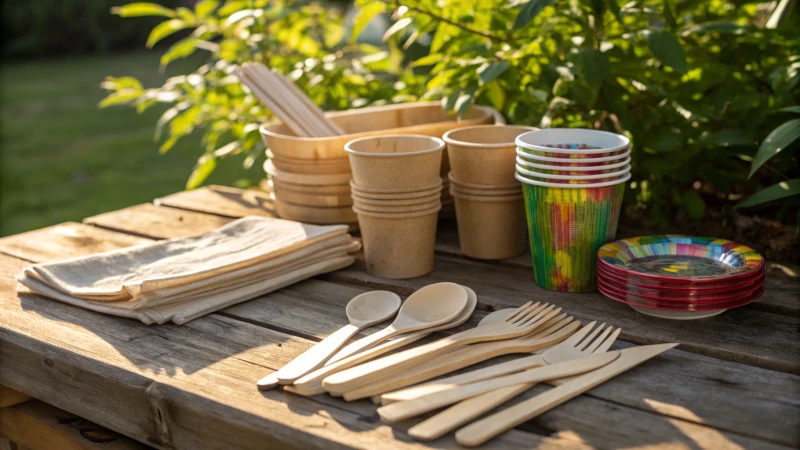
I remember the first time I hosted a picnic with eco-friendly wooden cutlery. It was a small step, but it felt like a big leap towards sustainability.
Disposable wooden cutlery is a sustainable choice compared to plastic and metal, though its durability varies based on wood type and usage. It handles light to moderate tasks well, offering more environmental benefits than plastic, albeit less robustness than metal.
When considering disposable wooden cutlery, it's crucial to weigh its durability against traditional materials. Imagine hosting a garden party; wooden utensils are perfect for those light bites and easy cleanup. Yet, if you're planning a steak dinner, you might find metal more reliable. These insights can guide your choice, ensuring you balance practicality with sustainability in your dining experiences.
Wooden cutlery is more durable than plastic.False
Plastic cutlery often outlasts wooden options in durability tests.
Metal cutlery is more durable than wooden options.True
Metal utensils typically withstand more wear and tear than wood.
What Factors Affect the Durability of Wooden Cutlery?
Ever picked up a wooden spoon and wondered if it would last through your next dinner party? You're not alone! Dive into what makes wooden cutlery durable and how to keep them in top shape.
The durability of wooden cutlery hinges on the type of wood, the manufacturing process, and maintenance practices. Selecting quality materials and proper care can greatly extend their lifespan, offering a sustainable alternative to plastics.
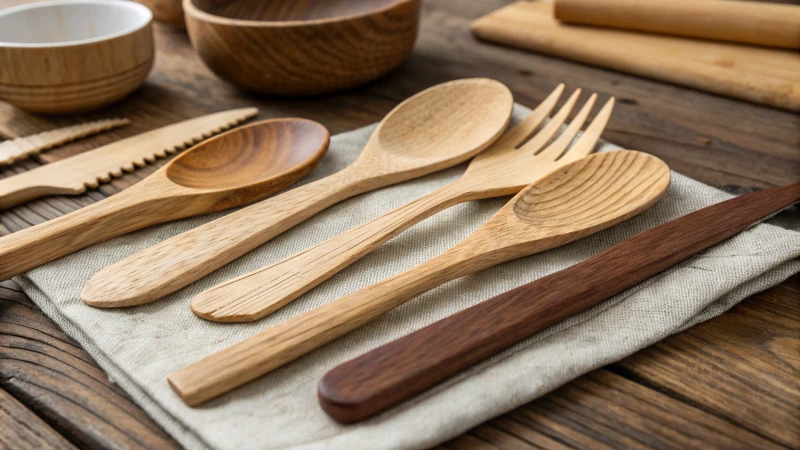
Types of Wood
I remember the first time I swapped my kitchen's plastic spoons for wooden ones. It felt like a small victory for Mother Earth. But I soon learned not all woods are created equal. Hardwoods like birch and bamboo are like the superheroes of the wooden cutlery world—stronger and more resilient than softwoods. Their tight grains mean they can withstand more wear and tear. If you're considering going green, think about options made from sustainable bamboo1.
Manufacturing Process
The craftsmanship behind each piece of cutlery can make all the difference. I've noticed that high-quality manufacturing processes lead to utensils that don’t splinter or warp easily. Look for those that are polished to a silky smoothness and treated to resist moisture. Some brands even use special coatings to keep the cutlery in tip-top condition longer.
| Manufacturing Aspect | Impact on Durability |
|---|---|
| Grain Tightness | Resistance to Splitting |
| Polishing | Smoothness & Safety |
| Moisture Resistance | Prevention of Warping |
Maintenance and Cleaning
I used to be guilty of just tossing my wooden spoons in the sink to soak. Big mistake! Proper maintenance is crucial for longevity. Avoid long water baths and always hand wash them. A quick dry afterward helps prevent any sneaky moisture damage. Occasionally, give them a spa treatment with food-safe oil to keep the wood looking young.
Environmental Conditions
Living in a humid climate has taught me that moisture is a sneaky enemy to wooden cutlery. High humidity can cause swelling, while dry conditions might lead to cracks. Storing your wooden utensils in a stable environment is key to keeping them intact.
Comparing with Other Materials
When I compare my wooden spoons to their plastic or metal counterparts, I think about sustainability vs. durability. Plastic may bend or break easily, while metal lasts longer but isn't as eco-friendly. Weighing sustainability and longevity2 is important when choosing your cutlery material.
Hardwoods like birch are more durable than softwoods.True
Hardwoods have tighter grains, making them more resistant to wear.
Plastic cutlery is more durable than wooden cutlery.False
Plastic bends and breaks easily, while wood can be more robust with care.
How Does Wooden Cutlery Perform in Different Use Cases?
Ever wondered how wooden cutlery stacks up in the real world?
Wooden cutlery shines in casual settings and events due to its eco-friendly nature and visual appeal, but it struggles in high-temperature or long-duration uses where sturdiness is crucial.
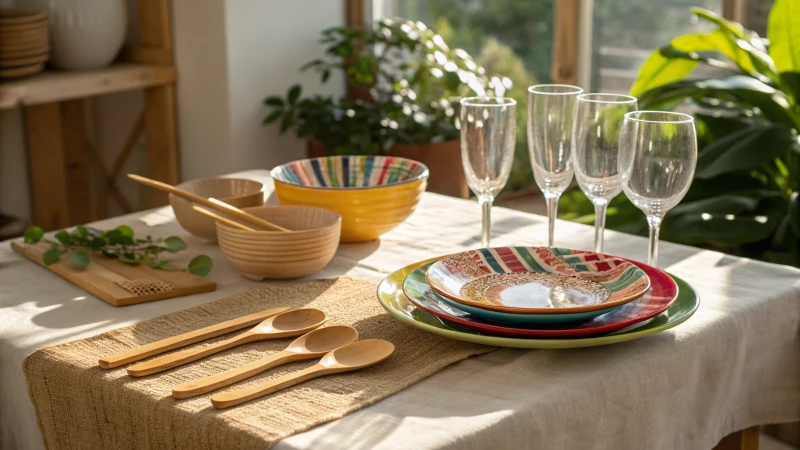
Casual Dining and Events
Picture this: a lovely outdoor wedding I attended last summer, where wooden cutlery was part of the rustic theme. It was not just about aesthetics; it felt good to know we were making an eco-friendly choice. Wooden cutlery really stood out with its natural charm, fitting seamlessly into the ambiance. It’s no wonder more eco-conscious restaurants3 are leaning towards this sustainable option for single-use scenarios. People appreciate its natural look and the environmental message it sends.
Comparison of Wooden vs. Plastic Cutlery
| Feature | Wooden Cutlery | Plastic Cutlery |
|---|---|---|
| Biodegradability | 100% biodegradable | Non-biodegradable |
| Aesthetic | Natural, rustic look | Varied, often less elegant |
| Durability | Good for short-term use | More durable for prolonged use |
| Cost | Generally higher | Generally lower |
Healthcare and Medical Use
In healthcare, I once tried introducing wooden cutlery in our clinic’s cafeteria. The idea was to reduce plastic waste, but it quickly became apparent that the sterilization required wasn’t practical. In settings like hospitals or clinics, where cleanliness is non-negotiable, non-porous materials reign supreme despite the eco-friendly allure of wood. This makes wooden cutlery a bit of a stretch for healthcare4 settings.
High-Temperature Scenarios
I remember using wooden cutlery at a cozy little café on a chilly winter day, only to realize its limits. While it handled my sandwich just fine, the minute I dipped it into my hot soup, it started to warp. For steamy dishes or drinks, metal5 or heat-resistant plastics remain the go-to choice. Wooden utensils simply aren’t built for intense heat.
Sustainability Impact
One thing I love about wooden cutlery is its environmental impact. Made from renewable resources, it significantly cuts down on plastic waste. However, ensuring that wood is sourced responsibly is crucial. It's heartening to see more businesses commit to sustainable wood sourcing6, but we must all stay vigilant to truly make a positive impact.
Wooden cutlery is 100% biodegradable.True
Wooden cutlery is made from natural materials that decompose naturally.
Wooden cutlery is ideal for high-temperature use.False
Wooden cutlery can warp or absorb moisture in high heat.
Why Choose Wooden Over Plastic or Metal for the Environment?
Imagine the world as a giant jigsaw puzzle, and our choices are the pieces. Opting for wood over plastic or metal could be the piece that fits perfectly in the puzzle of sustainability.
Choosing wood over plastic or metal is an environmentally conscious decision. Wood decomposes naturally, reducing landfill waste, while its sustainable sourcing and low carbon footprint make it an eco-friendly option.
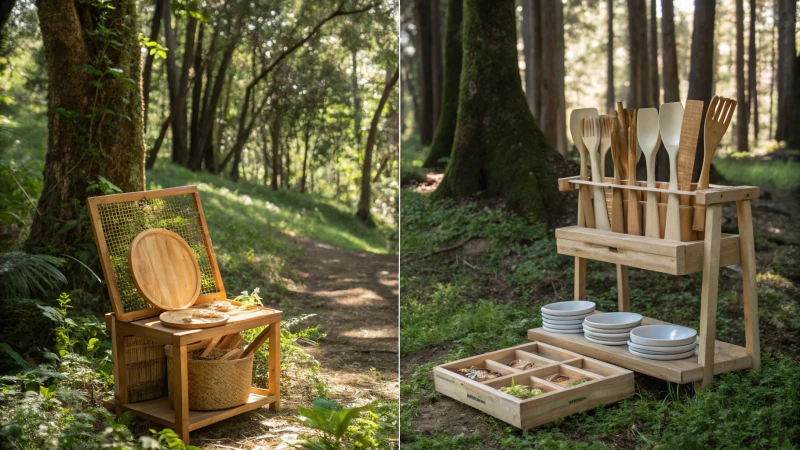
Sustainability and Sourcing
I remember the first time I held a wooden spoon instead of a plastic one—it was at a small, family-run cafe where they prided themselves on being eco-friendly. That spoon didn't just stir my coffee; it stirred my curiosity. Wood, when sourced responsibly, is like nature's renewable gift to us. Unlike plastic, which is a fossil fuel product, responsibly harvested wood keeps giving back. I’ve seen firsthand how sustainable forestry can replenish our resources, ensuring we don't rob future generations of their natural beauty. Mining metals, on the other hand, leaves scars on the earth that take lifetimes to heal.
Wood is a renewable resource when sourced responsibly. Unlike plastic, which is derived from fossil fuels, wood can be harvested sustainably. This means it can be replenished7 through responsible forestry practices, ensuring a continuous supply without depleting natural resources.
Carbon Footprint Comparison
I often find myself pondering the unseen impacts of my daily choices. Did you know that choosing a wooden fork over a plastic one can drastically reduce your carbon footprint? It’s akin to choosing a bicycle over a car for your commute.
When comparing the carbon footprint of wooden versus plastic and metal products, wood emerges as a clear winner:
| Material | Carbon Emission (Kg CO2/Kg) |
|---|---|
| Wood | 0.3 |
| Plastic | 6.0 |
| Metal | 10.0 |
The production of plastic and metal is an energy-intensive process that releases significant amounts of greenhouse gases. In contrast, wood acts like a natural air purifier by sequestering carbon during its growth phase—talk about multitasking! This table illustrates the emissions associated with each material, highlighting wood's minimal impact.
Biodegradability and End-of-Life Impact
A few years ago, while strolling on a beach littered with plastic debris, I realized how much we need to embrace materials that return to the earth gracefully.
One of the key environmental benefits of wooden products is their ability to decompose naturally. When discarded, wooden items break down into organic matter without leaving harmful residues. Imagine tossing a wooden spoon into your compost bin and knowing it will feed the soil—not fill landfills—while plastics persist for hundreds of years, contributing to landfill overflow and ocean pollution.
Aesthetic and Functional Advantages
Wood isn’t just about being eco-friendly; it’s also about aesthetics and experience.
Wood is not only environmentally beneficial but also aesthetically pleasing and functional. It provides a natural look and feel that enhances user experience—particularly in dining settings where eco-friendly aesthetics8 are preferred over cold metal or plastic cutlery.
I recall dining at an eco-conscious restaurant where the wooden cutlery added to the ambiance—warm and welcoming—and unlike the cold touch of metal or plastic, wood has a comforting feel that enhances dining pleasure.
Ecosystem Impact and Biodiversity
Every choice we make ripples through the environment.
The process of plastic and metal production can severely affect ecosystems by polluting water sources and harming biodiversity. Responsible wood harvesting supports biodiversity conservation by promoting ecosystem balance—it’s like nature's way of saying "thank you" for taking only what we need.
Reflecting on these points reminds me that choosing wooden products isn’t just about going green—it’s about making choices today that preserve tomorrow.
Wood is a renewable resource.True
Wood can be replenished through responsible forestry, unlike plastic.
Plastic sequesters carbon during its growth.False
Plastic is derived from fossil fuels and does not sequester carbon.
Is Wooden Cutlery Cost-Effective in the Long Run?
Ever wondered if wooden cutlery could be a savvy investment for your eco-conscious lifestyle?
Wooden cutlery proves cost-effective over time due to its eco-friendliness and potential savings from reduced waste management costs. While the initial outlay may be higher than plastic, its sustainable benefits often make it a worthy investment.
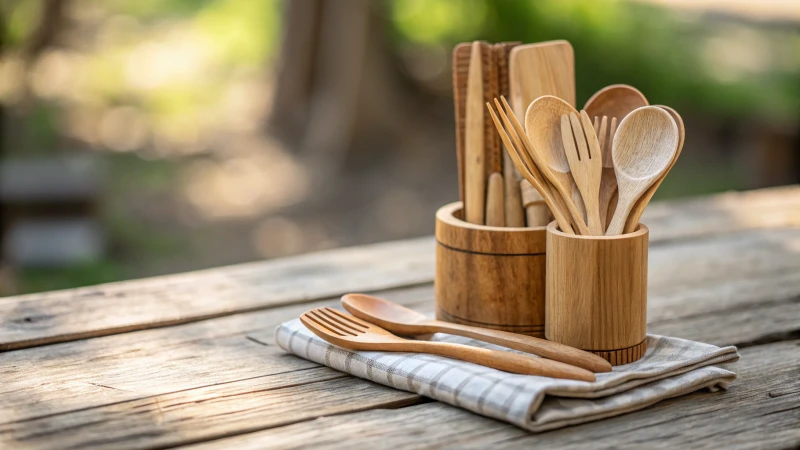
Analyzing the Initial Investment
Whenever I think about switching to wooden cutlery, my first thought is the initial price tag. It's no secret that wooden options are pricier than plastic ones. But here's the catch: if you're like me, managing a business or even planning large gatherings, buying in bulk can actually slash the cost per unit.
| Material | Average Cost (per 100 units) |
|---|---|
| Plastic | $10 |
| Wooden | $15 |
Sustainability and Environmental Impact
The magic of wooden cutlery lies in its ability to break down naturally. Unlike plastic, which seems to linger forever, wooden utensils decompose swiftly, easing the burden on our landfills. For businesses focused on sustainability, this means potentially saving on waste management costs.
Plus, tapping into renewable resources like wood could give your brand a green halo—showing the world your commitment to being eco-friendly9.
Durability and Usability
While I find wooden cutlery to have a natural charm and sturdiness, it's not as durable as metal. But let's be honest—how often do we need single-use items to last forever? In most cases, wooden utensils hold their own against plastic, offering a pleasant tactile experience that feels more natural.
Long-term Financial Benefits
Even though the upfront investment might seem hefty, wooden cutlery pays off in the long run through:
- Lower waste management costs thanks to its biodegradability.
- A boost in brand reputation, fostering customer loyalty.
- Compliance with environmental regulations, saving you from potential fines.
These advantages suggest that choosing wooden cutlery10 could lead to significant savings over time, particularly for businesses dedicated to sustainability.
Consumer Perception and Trends
We're living in an era where sustainability is not just a buzzword; it's a movement. More consumers are ready to pay a premium for environmentally-friendly products. This growing demand can translate into increased sales or new business opportunities when you switch to wooden cutlery.
Adopting such practices aligns with global trends toward sustainable living, potentially boosting your business's growth by attracting eco-conscious consumers.
In summary, while wooden cutlery might require a larger initial investment than plastic, its long-term benefits in sustainability, consumer perception, and regulatory compliance often outweigh these upfront costs.
Wooden cutlery is more expensive than plastic initially.True
Wooden cutlery costs $15 per 100 units, compared to $10 for plastic.
Biodegradable cutlery reduces landfill waste management costs.True
Biodegradable wooden cutlery decomposes faster, lowering waste management expenses.
Conclusion
Disposable wooden cutlery offers a sustainable alternative to plastic and metal, balancing durability with eco-friendliness, making it ideal for casual dining but less suited for high-temperature uses.
-
Learn about why bamboo is a popular choice for durable wooden cutlery and its benefits over other types of wood. ↩
-
Explore the balance between sustainability and longevity when comparing different materials for cutlery. ↩
-
Discover how wooden cutlery enhances dining experiences with its unique look and eco-friendliness. ↩
-
Learn why wooden cutlery is less common in healthcare due to sterilization needs. ↩
-
Find out why some materials outperform wood at high temperatures. ↩
-
Explore how sustainable sourcing ensures environmental benefits of wooden products. ↩
-
Exploring sustainable forestry practices reveals how they contribute to environmental preservation and ensure a steady supply of wood without ecological harm. ↩
-
Discover how eco-friendly aesthetics enhance dining experiences, blending sustainability with visual appeal. ↩
-
Learn how wooden cutlery enhances brand image by aligning with eco-friendly practices and sustainability initiatives. ↩
-
Explore how investing in wooden cutlery can lead to significant long-term financial and environmental benefits. ↩

